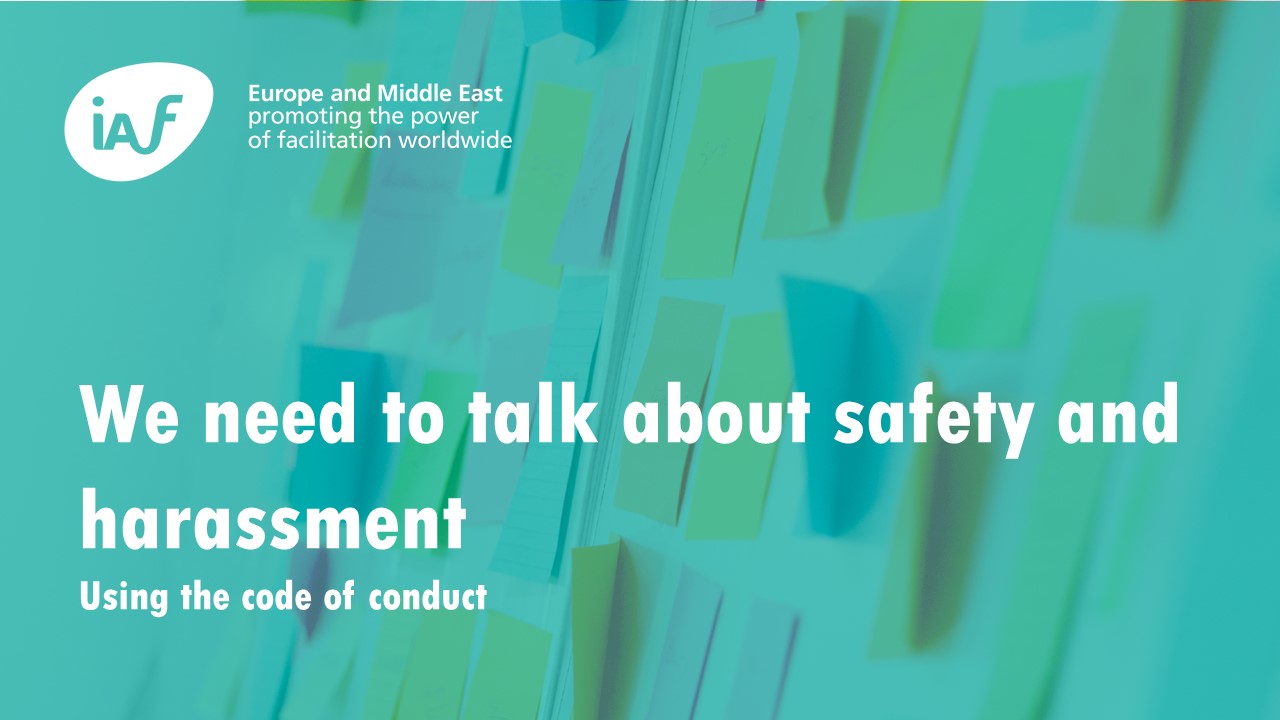Global Flipchart #16
September 2019
We need to talk about safety and harassment

“Our event is dedicated to providing a harassment-free experience for everyone, regardless of gender, gender identity and expression, age, sexual orientation, disability, physical appearance, body size, race, ethnicity, religion (or lack thereof), or technology choices. We do not tolerate harassment of participants in any form.” — from ConfCodeOfConduct.com
Many facilitators work with ground rules; a set of agreements that a group adopts to frame their time together. These often include reminders to stay constructive, listen with an open mind or focus on interests instead of positions.
Missing is often an explicit agreement to treat each other with respect and to refrain from harassing behaviour.
Harassment happens
However, experience tells us that as more people with different backgrounds and experiences come together in an event, inappropriate behaviour also happens more often. We also know that people most affected by harassing or assaulting behaviour tend to be in the minority and are less likely to be visible.
In diverse groups, our expectations of what is appropriate are not always in line with one another. Ultimately, a lack of (perceived) safety can lead to people not showing up or not speaking up in situations where their voice is needed.
We thus need to move beyond ground rules and start providing clarity before the event.
Codes of Conduct as a tool
The Code of Conduct is a simple tool to create a safer environment for all participants. The Code of Conduct at its core is a policy statement that makes it clear that the event organizers are willing to act on reports of harassment. In addition to a definition of what is considered unacceptable behaviour, it includes information on how and to whom to make an incident report to and how the policy will be enforced. It’s best to use an already established policy and adapt it to your events needs so that you don't have to worry about how it will stand up if and when it's battle-tested. Good templates can be found online (see resources below).
The role of you the facilitator
As part of the IAF Code of Ethics, facilitators sign up to “engender[ing] an environment of respect and safety where all participants trust that they can speak freely and where individual boundaries are honoured”. This environment of respect and safety starts before the event, in collaboration with the event organizer.
If the event you are facilitating does not have an established Code of Conduct, you can suggest the addition of one to the invitation. This becomes more important the bigger and more open the event is.
You can also choose to only facilitate events with a Code of Conduct. This means you are supporting and sending a clear message to conferences and events that have thought about the safety and comfort of all of their attendees - the Code of Conduct signals a conscious commitment to that.
Resources
- Template for a conference code of conduct
- Ashe Dryden: Codes of Conduct 101 + FAQ
- Geek Feminism: Conference anti-harassment resources